Service hours of Taejongdae Amusement Park
- Entry 04:00 Exit 24:00
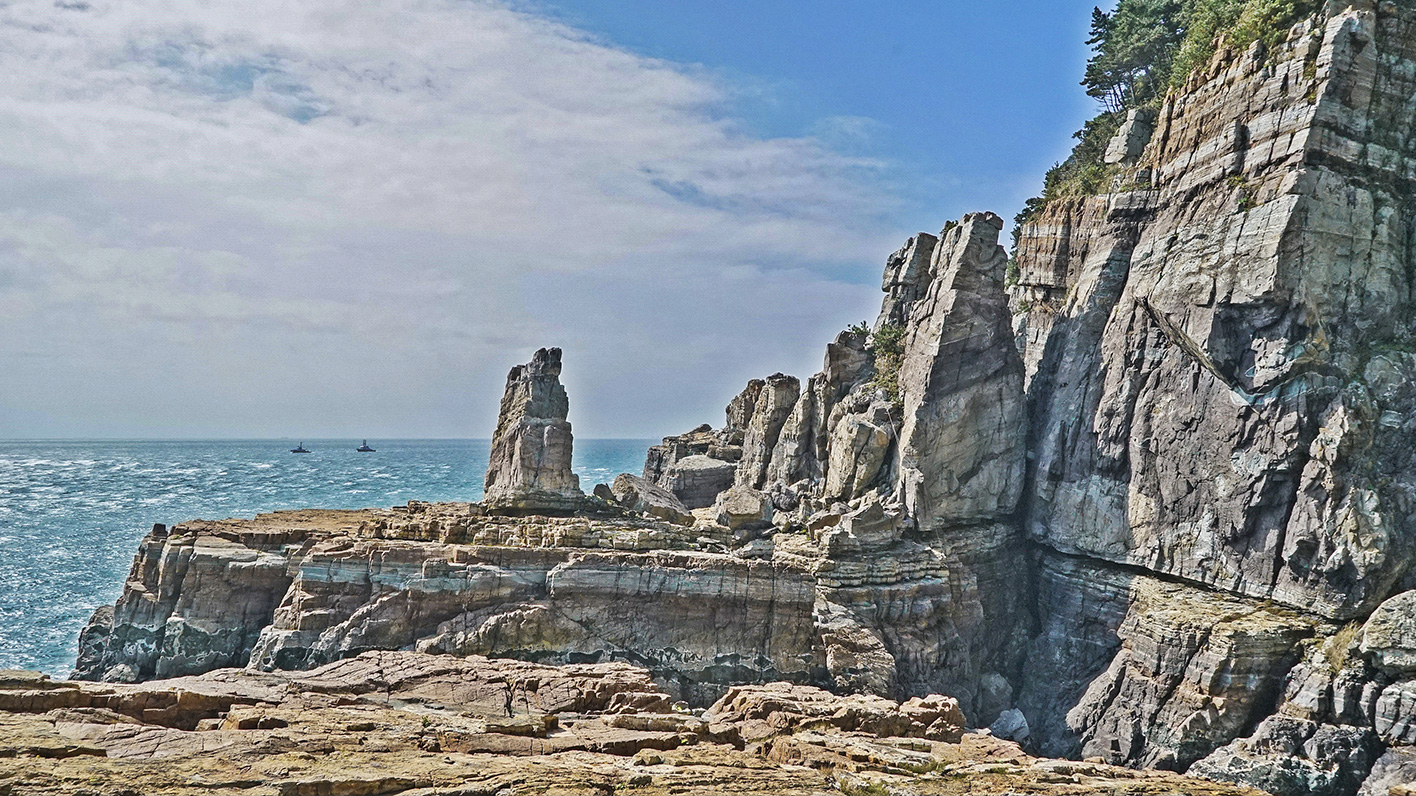
Well-known for coastal rock walls comprised of wave-cut terrace, sea cliffs and costal caves, created through erosion by waves of sedimentary layers from a lake in the late Cretaceous period, it is Busan’s signature attraction for coastal views.
Top attraction with the landscape of various geological records of orbicular hornfels, slumping structures, dikes, faults and flower structures, including wondrous natural rock murals and a pebble beach; offering trail courses leading to coastal plant eco course, Taejongdae observation platform and Yeongdo marine culture space.
Taejongdae is a landmark of Busan, showing various erosional landforms, such as sea cliffs, wave-cut platforms and sea caves created on the lacustrine sedimentary rocks at Late Cretaceous period. Marvelous geolgical sceneries such as orbicular hornfels, flower structure, slumps formed by earthquake are also found.
“Taejongdae” located at the southeastern tip of Yeongdo is Busan’s scenic site well-known for its rocky coast representing Busan together with the Oryukdo Islands. Wave-cut cliffs extending as long as 100 meters, dense warm-temperate forests and undulating billows harmonize to create magnificent views. In particular, uplifted wave-cut terrace Sinseonam Rock below Yeongdo Lighthouse is Taejongdae’s signature attraction. Its formation traces back to the fourth and final interglacial period, about 120,000 years ago.
It is recorded in the Historical Remains section of 『Records of Dongnae-bu』 that “People can barely access Taejongdae due to a stone bridge on the west as the eastern sea turns in Jeoryeongdo, 12km south of our bu(town).” According to a story passed down orally, it is said that it was the place where King Taejong Muyeol of Silla shot an arrow and hit a drapery and was thus called Taejongdae. As it is said that in years of drought a rain calling ceremony was conducted, it is assumed that it was named such in relation to King Taejon Muyeol.
As an attraction with Taejongdae observation platform where the sound of waves crashing against coastal cliffs can be heard with views as far as Tsushima Island, Taejongdae has been frequented by poets and painters since old times. The flat rock below the lighthouse on the right is called Sinseonbawi Rock due to a story of Taoist immortals descending from heaven and having fun on the rock in ancient times. The lonely stone standing on Sinseonbawi Rock is called Mangbuseok due to a story of a legendary faithful wife who died and was turned to stone, anxiously waiting for her husband who was taken by Japanese pirates.
“Taejongdae” located at the southeastern tip of Yeongdo is Busan’s signature scenic site. Wave-cut cliffs extending as long as 100 meters, warm-temperate dense forests and undulating billows harmonize to create magnificent views. At Taejongdae observation platform, the sound of waves crashing against coastal cliffs can be heard and on a fine day, views extend as far as Tsushima Island . According to a story passed down orally, it is said the name Taejongdae came from its being the place where King Taejong Muyeol of Silla practiced archery after finishing the arduous duty of unifying the Three Kingdoms.; the rock rising up like the thumb is called Mangbuseok and is said to have served as Sahu*
* Sahu: ten feet long and wide hemp cloth used as an archery target
| Japanese colonial era | A military fortress for a long time, public access was restricted. |
|---|---|
| 1967 | Announced as an amusement park by the Ministry of Construction and Transportation |
| 1969 | Designated as a tourist attraction |
| 1972 | Designated as Busan Monument No. 28 |
| 1974 | Began development in earnest with the confirmation of Taejongdae Amusement Park Development Plan, taking on the title of tourist attraction |
| 2005 | Designated as State-designated Cultural Property Scenic Site No. 17 |
| 2013 | Certified as National Geopark |
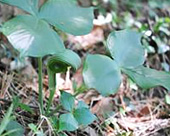
Arisaema ringens, usually found in the shade of seaside trees, is poisonous plant belonging to Araceae genus. Arisaema ringens, compared to other Arisaema, has much larger leaves that are divided into three parts.
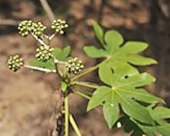
Palsoni, found in seaside forest shades, is an evergreen shrub belonging to the Ginseng family. Because leaves are usually divided into eight parts, looking like a hand, it was named Palsoni (eight hands).
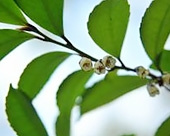
Eurya japonica, an evergreen broad-leaved shrub belonging to tea family grows at the foot of seaside mountains in the south. Called “Ligustrum foliosum(Gasreginang in Korean)” on Jeju Island, from which its name Eurya japonica(Sasrepi in Korean) seems to originate. Its flowers smell like ammonia and have sterilizing and soothing effects. It is also said to help with air purification with great resistance to sulfurous acid gas.
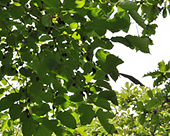
Morus bombycis Koidz a small deciduous tree belonging to the Moraceae family, grows across the Korean Peninisula. Its black fruit known as “mulberry” is delicious when ripe. Phellinus linteus is produced sometimes from the rotten stems of old mulberries.

About 200 species of trees grow naturally around Taejongdae, including dense pine forests, warm-temperate evergreen broad-leaved trees, Antipathes japonica, Japanese Cinnamo, Silver Mongolia and Eurya japonica. On the course leading from the entrance to the trail to the lighthouse, there is a vegetation trail providing explanation of the plants and oceanic organisms of Taejongde.
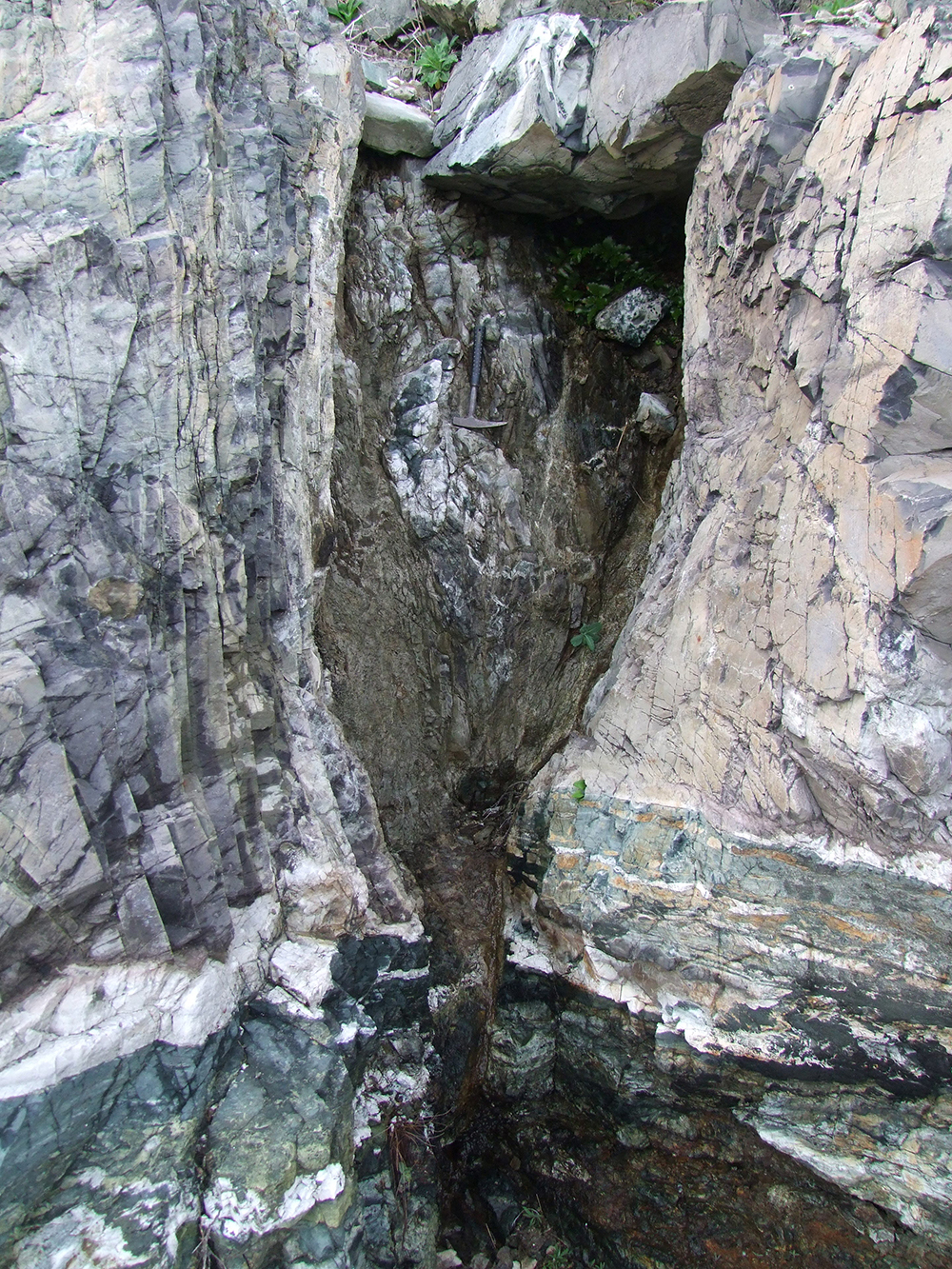
Check out the fault that penetrated the strata of sedimentary rocks that looks like rice cake steamers stacked in sequence, 10m southwest of the Natural History Exhibition Hall. The rocks around this fault were shattered due to fault movements. They bring up the image of flower bouquets as the shattered zone becomes wider to the top. The thick width of fault clay made by fault movements pulverizing rocks can be observed inside the shattered zone.
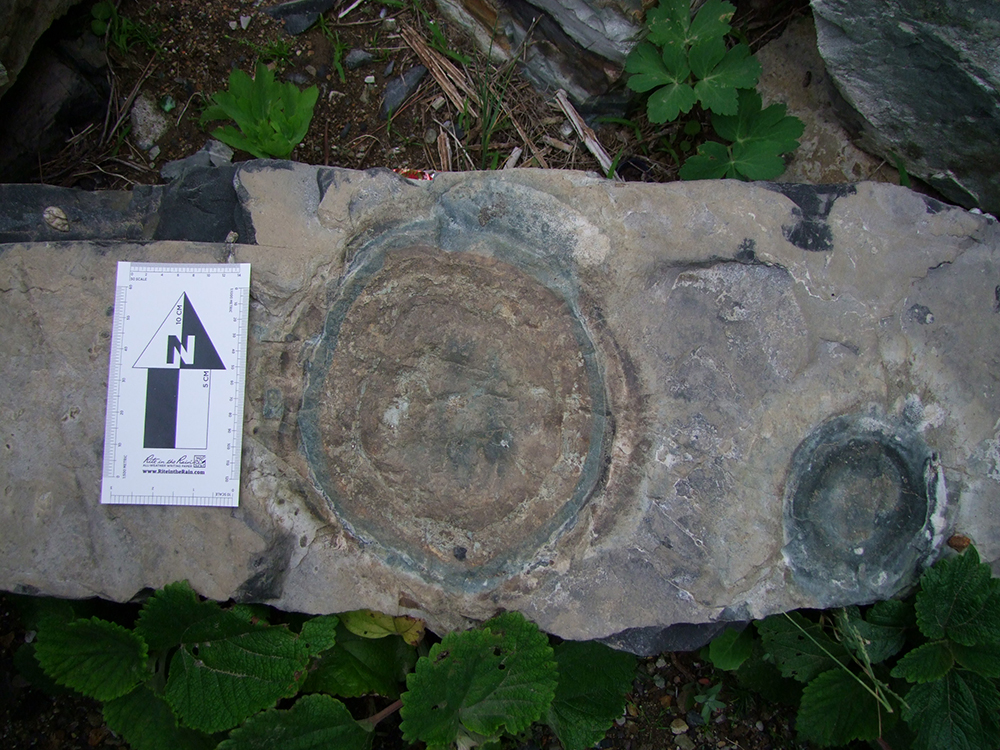
Unique concentric patterns can be observed on the surface of the sedimentary rock that makes up the sea cliffs of Taejongdae. These are like dinosaur footprints at a glance, but are orbicular hornfels made through thermal metamorphism of sedimentary rocks. Orbicular hornhels are in various sizes from small (2~3cm) to large (l meter).
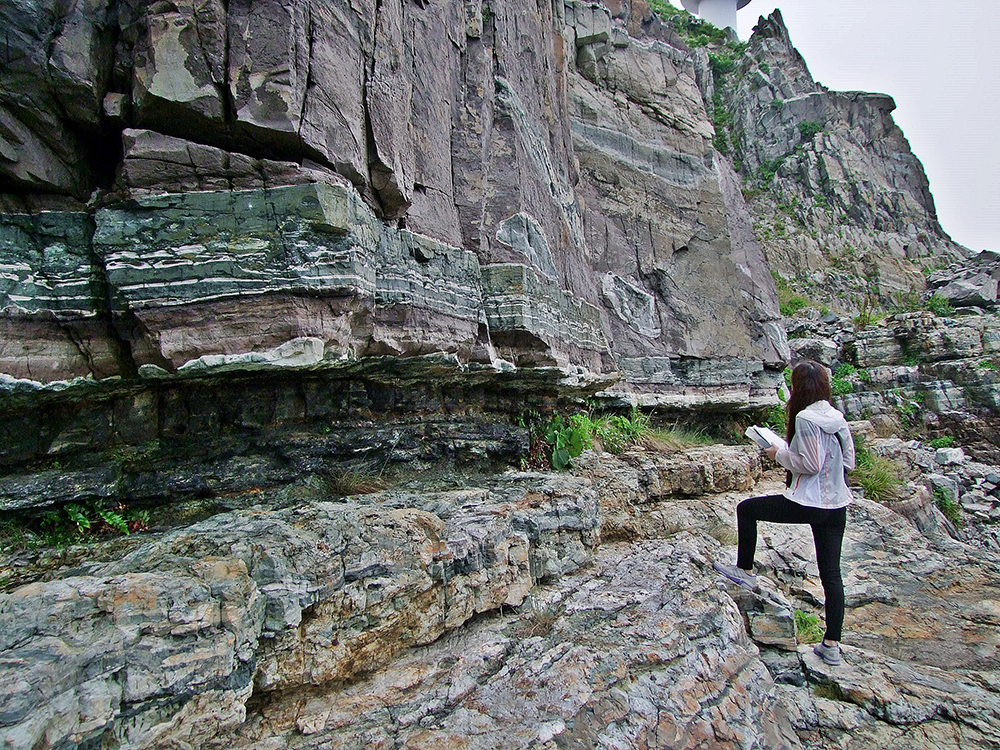
During a stroll along the Taejongdae coastal cliffs, you will find deep grooves where the lower part of the cliffs meet the flat area below. These grooves, called noth, were made by wave erosion and rose up to the current location due to uplifting ground. Can you believe the place you are stepping on now was once at the surface of the sea?
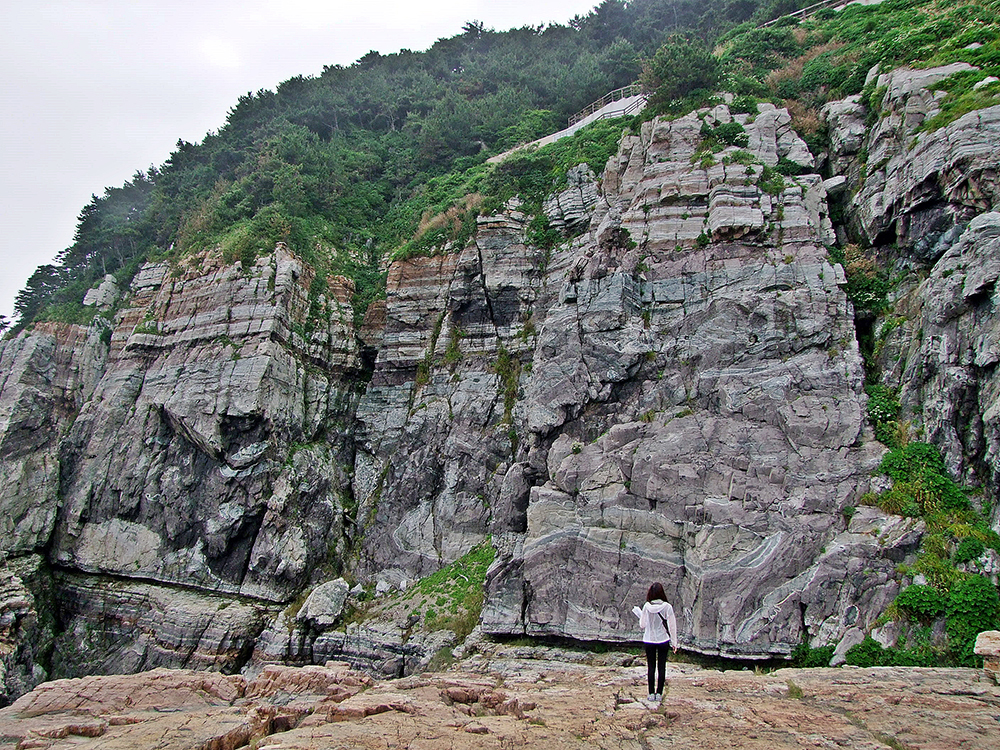
Green, white and red rocks, mingling together on the coastal cliffs comprised of tuffaceous sedimentary rocks of Taejongdae Formation, create scenes like ink landscape paintings. Slumping structure or convoluted bedding is well-known as a natural mural crafted by sedimentary structures such as rip-up structure whereby lower strata torn upwards enters the rock fragments. Appreciate the natural murals with various patterns and name them on your own way.
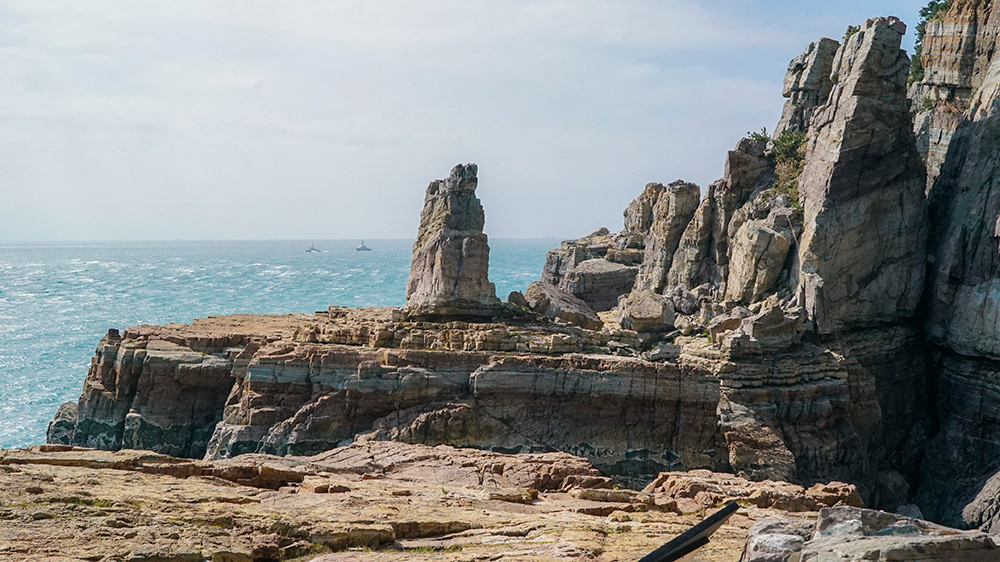
Taejongdae offers the most outstanding scenery of precipitous sea cliffs and flat wave-cut terraces arranged in tiers. Taejongdae(rock) refers to accessible wave-cut terrace. This place was named such because King Taejong Muyeol of Silla stayed there for a while, fascinated by the beautiful coastal scenery, and enjoyed archery here. Taejongdae(rock) ended up at its present height and location after the wave-cut terrace went through uplifting of the ground. Such topography is called coastal terrace and minimum five-tiered terrace is found here.

Taejongdae used to be called Sinseonbawi (Sinseondae) due to the legend of fairies from heaven having fun on this rock. Today the rock on the right is called Sinseondae(rock) and the rock on the left Taejongdae(rock). These rocks get their terrace topography from uplifting of wave-cut terrace.
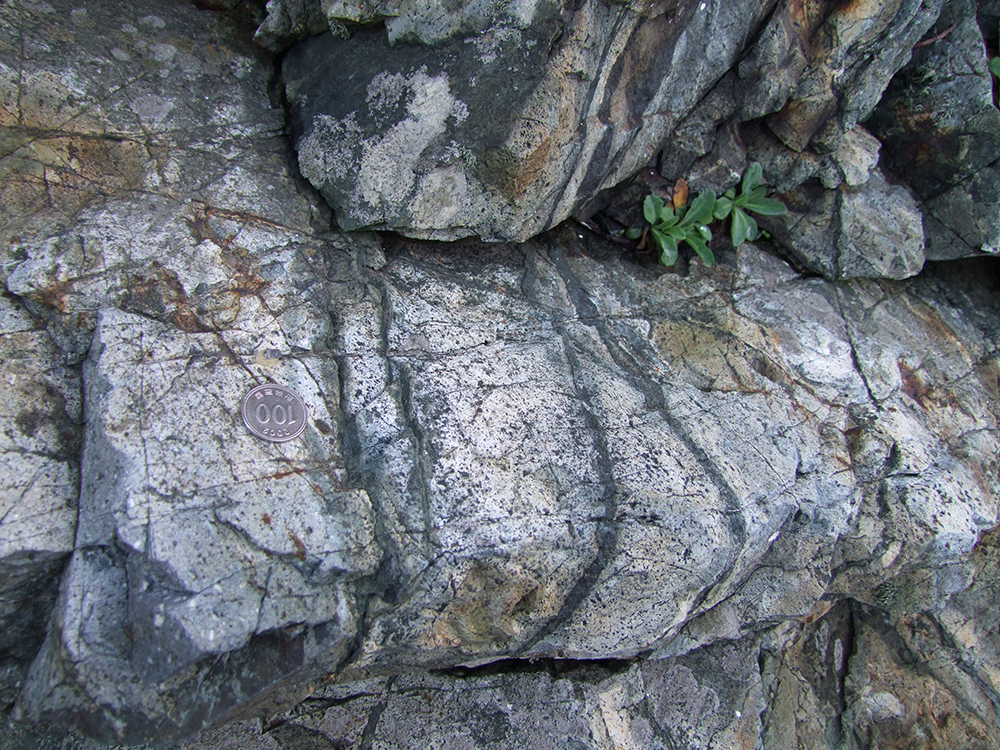
Many small, thin, dark greenish veins appear in the tuffaceous sedimentary rocks of Taejongdae. These small veins are minerals comprised of a single mineral called chlorite. Veins are formed by precipitation of substances dissolved in hydrothermal solution into crystals when hydrothermal solutions are heated underground and interpenetrates along cracks in rocks.
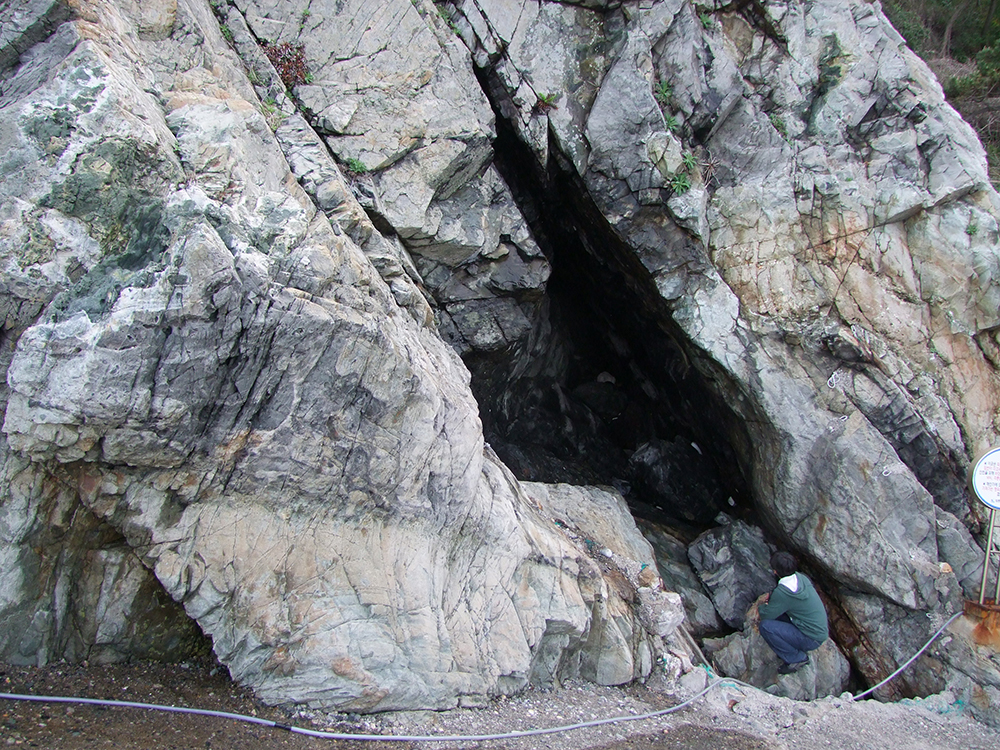
Small and large sea caves can be observed all along the coastal cliffs of Taejongdae. Such caves were formed as vulnerable rocks were worn away due to differential erosion by waves. Sea caves have become a great tourism source as Taejongdae’s representative coastal erosion-prone topography together with coastal cliffs and wave-cut terraces.
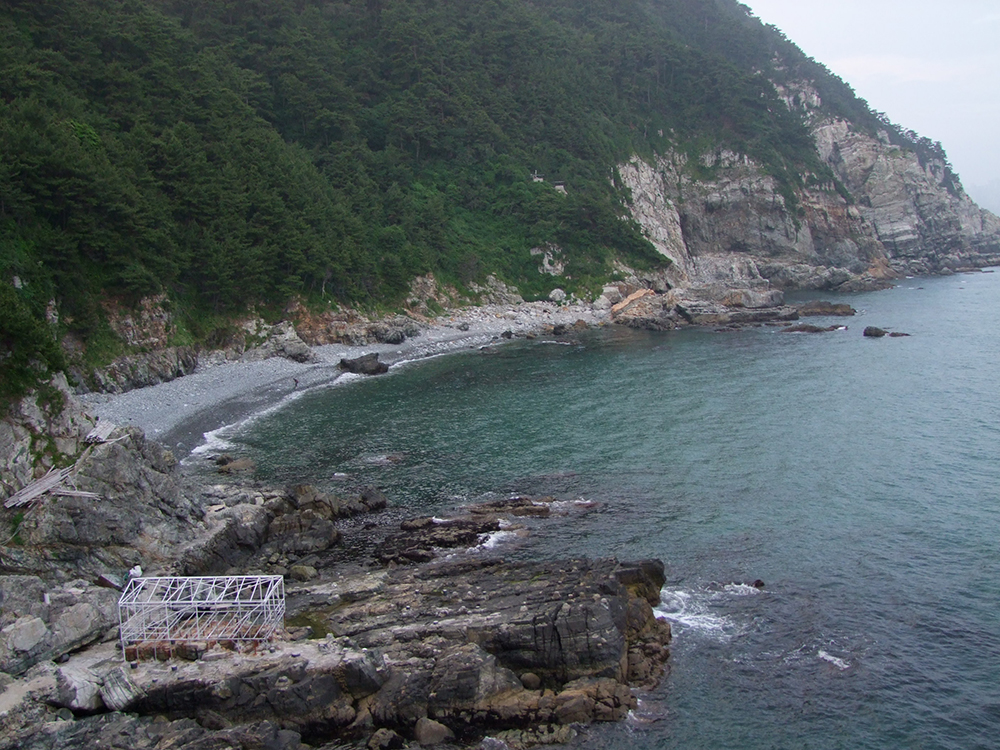
Precipitous coastal cliffs create a magnificent view of the erosional coast of Taedjongdae. Pebbles between the coastal cliffs and the sea have round and smooth form due to abrasion while moving with the waves. Such pebbles are piled up by the waves, forming a shingle beach (modern form pebble beach). Precipitous coastal cliffs and round pebbles with the landscape of the South Sea are used as a resting place for comforting citizens’ minds and bodies fatigued from daily life.
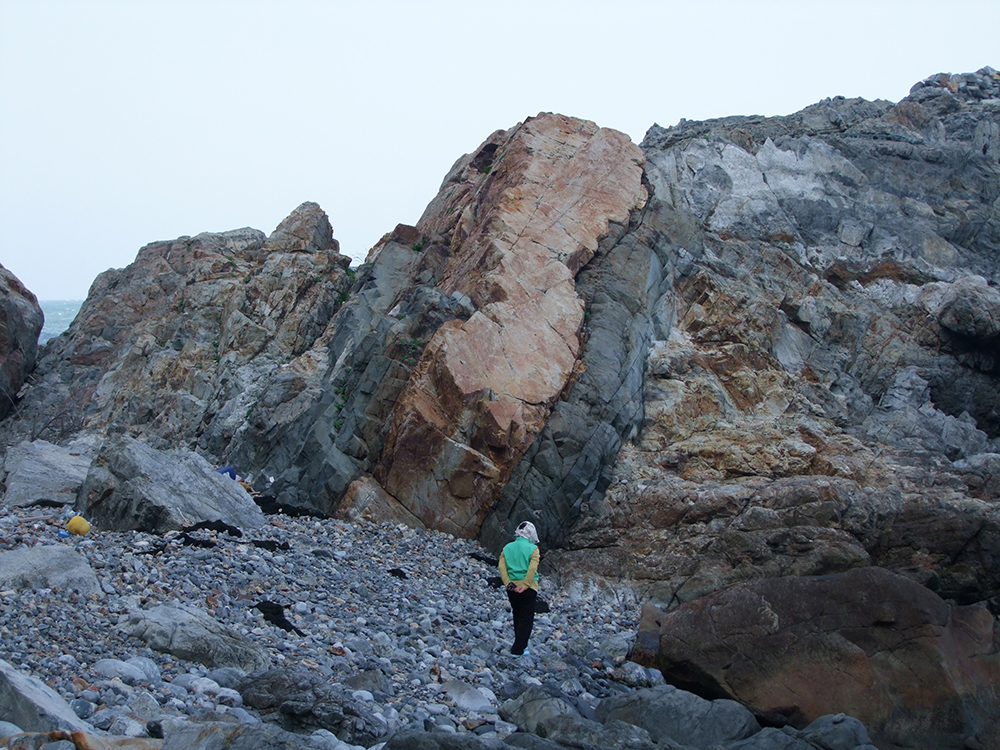
This unique form of dike can be found in Taejongdae. The two dark-colored dikes on both sides are andesitic dikes. With similar texture and mineral combinations of the two confirmed, they are deemed to have the same origin. The bright-colored dike between the two dikes is a rhyolitic dike. Thus, two or more dikes of different chemical and mineralogical compositions exposed together are called a compound dike.
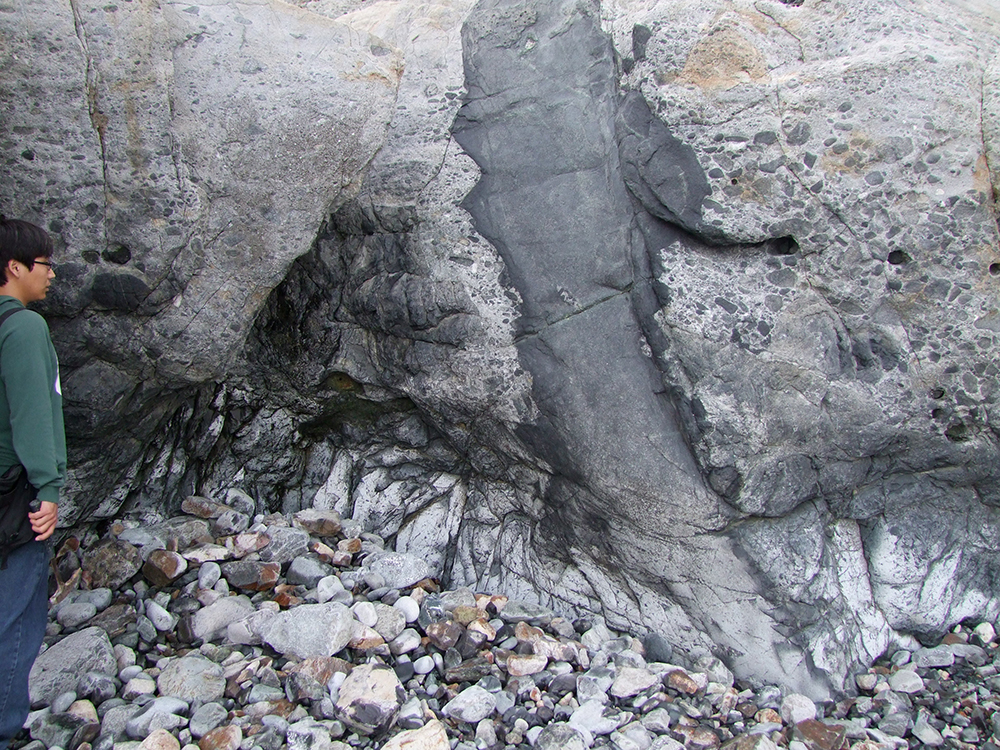
Many dark grayish andesitic dikes cutting stratification are observed in the tuffaceous sedimentary rocks of Tajongdae Formation. With the dikes at this point having the feature of irregular boundaries with surrounding rocks, traces of magma that partially got into surrounding sedimentary rocks like water drops can be observed. Such features indicate that they are syn-depositional dikes that interpenetrated before solidification of surrounding sedimentary rocks.
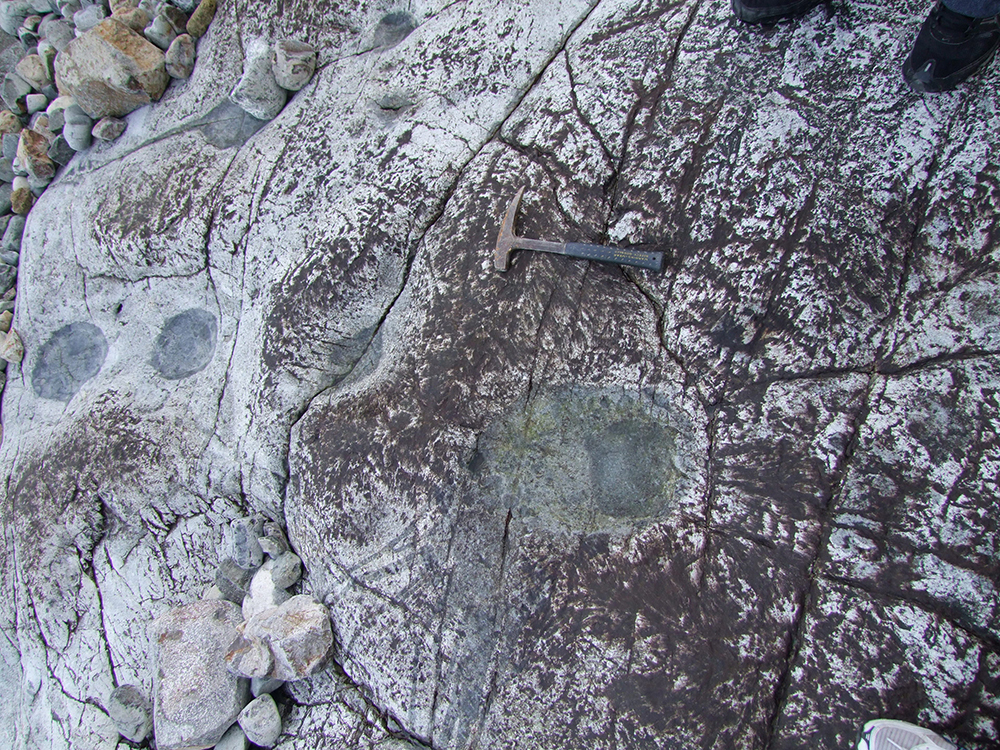
Small round puddles looking like dinosaur footprints appear on the flat wave-cut terrace on the seashore of Taejongdae. These puddles, called marine potholes, were created by pebbles transported to the sea that eroded the rock surface together with fluctuating waves.
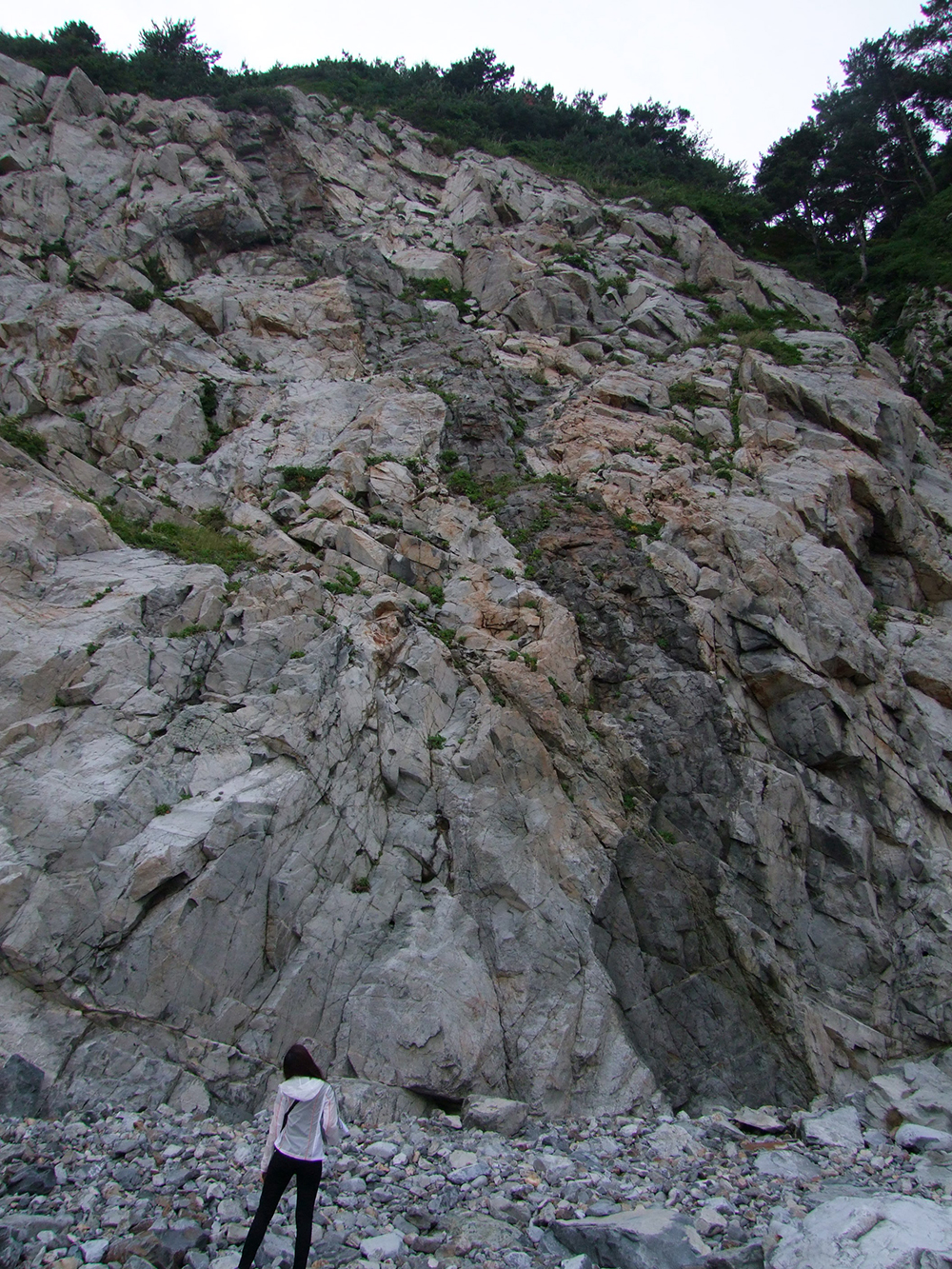
About a long body in 1m thickness appears on the cliffs This soaring dark grey body is a dike made by magma interpenetrating the cracks in rocks underground. The composition of magma that formed this dike is andesitic.
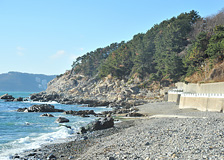
Visitors are wowed by the magnificent natural scenery of Taejongdae Amusement Park, located at the southernmost tip along Jeoryeongdo coast. King Taejong Muyeol of Silla, fascinated by this beautiful coastal scenery, frequented this place, from which its name Taejongdae originated.
| Festival name | Hosting month | Location | Official contact No. |
|---|---|---|---|
| Jeongwol Daeboreum Moon-Viewing Festival | the 15th of the New Year according to the lunar calendar | in Korea Maritime and Ocean University | 051-419-5726 |
| Joseon Tongsinsa (Korean missions to Japan) Festival | May | around Yongdusan Park | 051-744-7707 |
| Busan Port Festival | May | around International Cruise Terminal | 051-501-6050 |
| Taejongdae Hydrangea Festival | June | in Taejongsa Temple, Taejongdae | 051-419-4062 |
| Yeongdo Bridge Festival | September | around Yeongdodaegyo Bridge | 051-419-4062 |
| Busan Port Lighting Festival | Dec.~Jan. | around Yongdusan Park | 051-231-2537 |
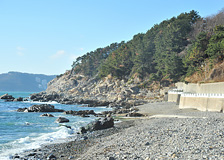
After passing through Yeongdo’s gateway, Yeongdodaegyo Bridge and Busandaegyo bridge, the 3km Jeoryeong Coastal Walkway starts on the path leading to the second Songdo seashore from the lower intersection. Once an inaccessible military reservation with steep and rough topography, it was later reopened for the public with a walkway for coastal tours. Different scenery on each curve of the walkway can be enjoyed against the backdrop of Tsushim Island and the vast sea towards Songdo with charming attractions and entertainment all around, including Korean traditional totem poles, stone pagodas, suspension bridges, a rose tunnel, a wave square and Rainbow Fountain.
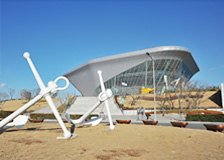
| Viewing hours | Weekdays | 09:00-18:00 |
|---|---|---|
| Saturday | (May-Aug.) 09:00-19:00 (May-Aug.) 09:00-21:00 |
|
| Sunday, Holiday | 09:00-19:00 | |
| The days following Lunar New Year’s Day and Chuseok(Korean Thanksgiving Day), Children’s Day, National Liberation Day |
09:00-21:00 |
| Viewing hours | Weekdays | Saturday | Sunday ·Holiday | |||
|---|---|---|---|---|---|---|
| Departure from the museum | Departure from Busan Station | Departure from the museum | Departure from Busan Station | Departure from the museum | Departure from Busan Station | |
| 1 | 10:00 | 10:30 | 10:00 | 10:30 | 10:00 | 10:30 |
| 2 | 11:30 | 12:00 | 11:30 | 12:00 | 11:30 | 12:00 |
| 3 | 13:00 | 13:30 | 13:00 | 13:30 | 13:00 | 13:30 |
| 4 | 14:30 | 15:00 | 14:30 | 15:00 | 14:30 | 15:00 |
| 5 | 16:00 | 16:30 | 16:00 | 16:30 | 16:00 | 16:30 |
| 6 | 18:20 | - | 18:20 | 19:00 | 18:20 | - |
| 7 | - | - | 19:20 | - | 19:20 | - |
| 8 | - | - | 21:20 | - | - | - |
Busan bus No. 66 and City Tour Bus do not stop at [National Maritime Museum] to avoid traffic congestion on weekends and holidays.
Get off at [International Cruise Terminal].